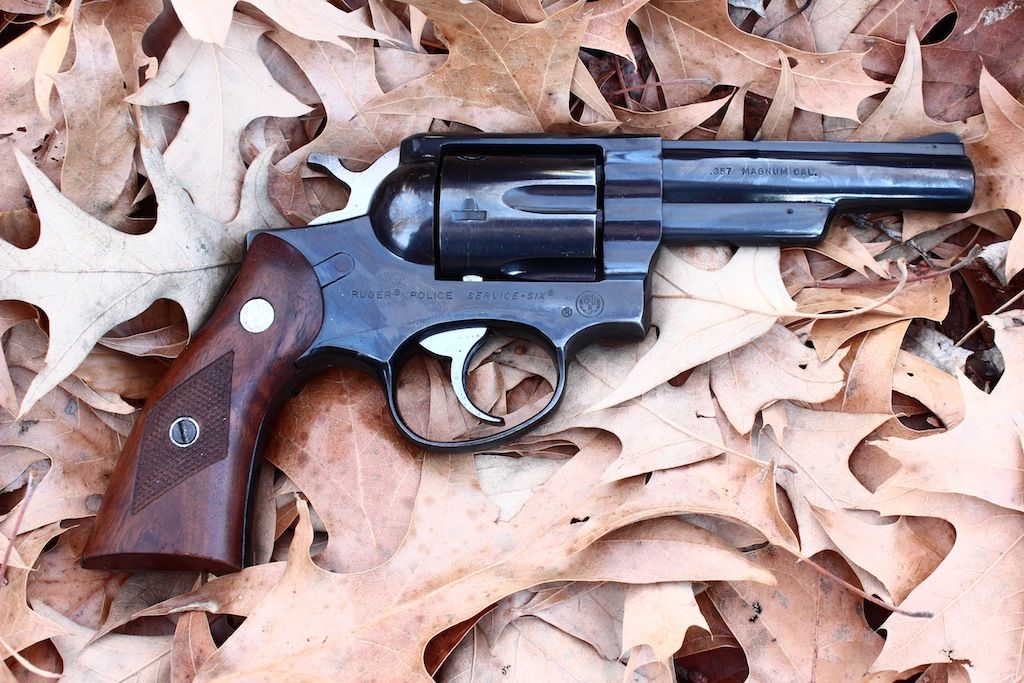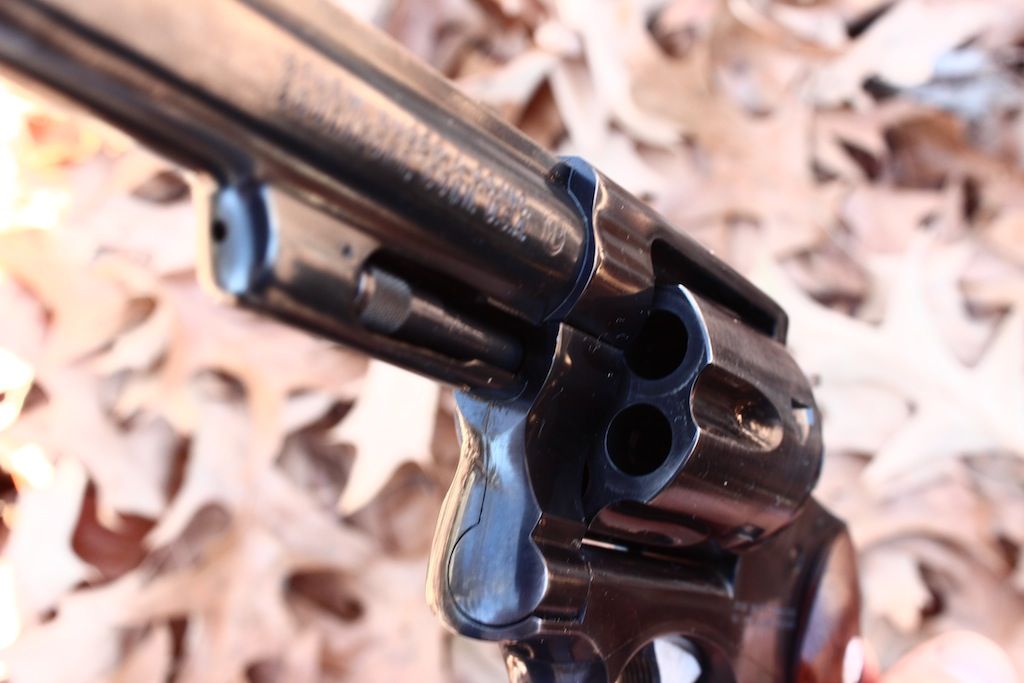Quoted:Turns out the GP100 is not as durable as many believe.
In early 1995 I discovered a crack in the cylender. Ruger replaced the cylender, front sight and re-cut the forcing cone.
I continued shooting it weekly and by mid 1996 it was binding and spitting lead bad. Went back to Ruger again and they replaced the crane pivot assembly, the ejector retainer, ejector retainer spring and polished the front latch.
In the late 90's I got seriously into handgun hunting. Took a nice Doe with the GP100 and 180 Gn Hard Cast flat point lead. But preferred my S&W .41 Mag. So the GP100 was put in the safe. Pulled it out of the safe today for the first time since.
I see they are still a popular revolver but come with some grips that appear oversized and are not very attractive IMO.
View Quote
When Ruger introduced the Security Six / Service SIx / Speed Six series in 1972, they did six things that were noteworthy in a DA revolver at the time:
1) Rather than using a frame with a side plate, as in the similar sized medium frame S&W revolvers, Ruger used one piece frame design where the lock work pivots down out of the bottom, leaving both sides of the frame fully intact.
2) Ruger also used a heavier top strap and beefed up the frame where it accepts the barrel.
3) Ruger offset the notches for the cylinder latch so that they were not centered over the chambers. This removed the weak point in other DA revolvers of the time, where the notch was at the center of the chamber, making a very thin spot in the cylinder. (See picture off the offset notch below.)
4) Ruger used larger, heavier parts in the clockwork, with larger surface areas for the latch, hand, sear, etc.
5) Ruger used coil springs rather than flat springs, improving durability and reliability.
6) Ruger made the revolver using investment casting techniques that created parts that were very close to final dimension, reducing the machining required and reducing the production costs.
The end result was a medium frame pistol that was substantially stronger than similar sized K and L framed S&Ws, and Colt Mk III and Mk V Trooper and Lawman pistols.
The trade off was that the trigger pull was not always up to the same standard as Colt and S&W revolvers, but with the money you saved you could afford a trigger job.
The long term benefit was that the Security/Service/Speed Six series revolvers were built like tanks and would last pretty much forever even on a steady diet of .357 Mag ammo. It also means the lock work parts are generally heavier and less likely to embrittle and fracture over years of hard use.
----
In 1979, Ruger scaled the design up as the Redhawk with larger calibers - .41 Mag, .44 Special/44 Mag, and .45 Colt, as well as .38 Special/.357 Mag. Ruger improved the designs slightly with the addition of a crane latch that locked the crane at the front as well as the rear.
Fast forward to 1985, and Ruger introduced the GP100, which was another evolutionary development of the Security/Service/Speed Six series. The major design improvement was the use of the crane same crane latch that Ruger introduced on the Redhawk. It was a case of taking an already incredibly tough medium frame revolver design and making it even tougher.
-----
Below is my 39 year old Police Service Six:
It's seen a lot of use over the years, yet is still tight, properly timed and accurate, with a very smooth, crisp and clean trigger pull - 9 pounds in DA, and 3 pounds in SA mode.




It's held up extremely well, but the GP100 with it's crane latch is even tougher. And when you compare the Six series and the GP100 to other medium frame revolvers, it's hard to conclude that they are in fact not every bit as tough as people say they are.
Every company makes a lemon now and then, and while Ruger seems to be making more now than they used to, they stand firmly behind their products and will replace those occasional lemons with properly functioning firearms.
Nobody makes stronger medium frame revolvers than Ruger.
 Win a FREE Membership!
Win a FREE Membership!